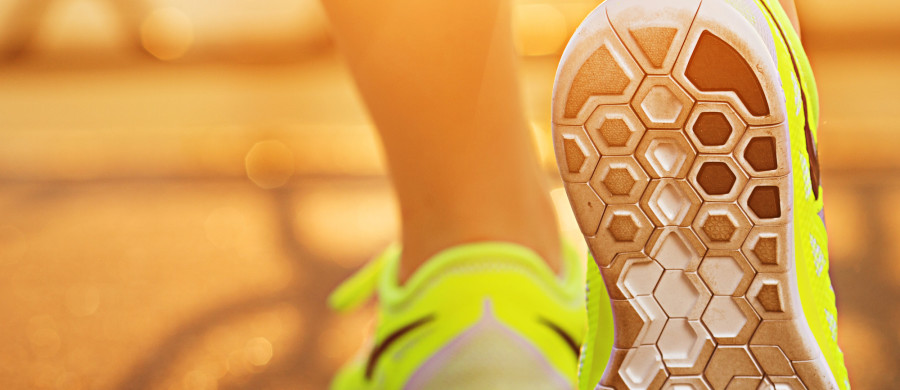Plantar fasciitis is eventually going to send my kids to college. It’s one of the top five foot/ankle ailments that I treat each day. For some, it’s treated quite quickly, but for others, it can be a longterm, debilitating issue.
There are many more issues that can cause pain on the bottom of the foot or heel. That said, I would advocate making an appointment with our office at 303.440.3036 to make sure you are treating the right problem in the first place.
In regard to plantar fasciitis, there have been a few ‘staple’ treatments that have brought patients relief over the years.
Stretching
I believe that we are a terribly understretched society in the United States. Time is a rare commodity. Who has time to stretch?! This is usually where most get caught up, we have a limited amount of time to work out and then get back to life. I get it. I’m one of the biggest culprits.
Here are a couple of resources that I give out to demonstrate not only stretching the calf muscles (that eventually become the plantar fascia), but also deep tissue mobilization (massage) that can help break up chronic inflammatory tissue that builds up over time.
plantar fasciitis information and stretching form
Deep tissue mobilization: https://youtu.be/hauyuXuCq8 (This video is 9 minutes, but worth the watch due to the detailed description/instruction given.)
Icing and other Antiinflammatories
Over the counter nonsteroidal antiinflammatory drugs (NSAIDs) are used often to ‘take the edge off’ of foot pain. While these can work, I don’t recommend them for any longer than a few days, as they can actually cause more problems than benefits for some. Icing is great and I typically recommend my patients to ice 23 times per day depending on the severity of symptoms.
Orthotics
This is a relatively hotbutton topic as to who needs orthotics and who doesn’t. I agree that not all patients need them. I don’t agree that they should not be used at all. There are plenty of patients, which due to the structure of their feet, truly need orthotics to help support the superstructure of their feet. Figuring out if you’re one of these people, unfortunately, is difficult via a blogposting…call for an appointment or purchase a quality pair of overthecounter orthotics to see if they help. A few brands that I like are Powerstep (found in our office at Boulder Medical Center), Superfeet (www.superfeet.com/insoles) and Sole (www.yoursole.com/us).
Night Splints
These are ‘braces’ that help hold the ankle joint at a certain position (at least around 90 degrees) to stretch your plantar fascia and calf muscles while at rest. These can be quite helpful to ameliorate the pain experienced with those first steps out of bed in the morning. I have found that most (upwards of 50% plus) patients have a hard time tolerating them for the entire time they are sleeping. There are multiple night splint options out there. In my opinion, it is still a work in progress as to find the most comfortable, nonbulky, resultproducing device.
Physical Therapy
This cannot be understated as to its importance. Because I’m not a physical therapist, I do my best to start patients with simple stretching exercises that can get them on a route to pain relief. I believe that a lot of foot and ankle pain can start from imbalances that are higher up in the chain of the lower extremity. Namely, the pelvis and the muscles surrounding it. This is where your physical therapist can evaluate, diagnose and treat what is causing your foot/ankle to become strained and angry. We refer to physical therapy often and our patients are better for it.
New and Treatments in Plantar Fasciitis
There are plenty of other treatments to help relieve heel and arch pain available today including: prolotherapy, fascial distortion, rolfing, topical compound pharmaceuticals, platelet rich plasma injections, stem cell therapy as well as other noninvasive, outpatient procedures.
Nutrition The United States is not only ‘understretched’, but overinflamed. For the majority of the nation, the Standard American Diet (SAD) has wreaked havoc on our bodies’ systems. The overindulgence of processed foods and sugars is causing general ‘aches and pains’ to become the norm. This topic is a whole separate blog posting, as tomes have been written on the subject, but I believe it’s worth mentioning. “Cleaning up” one’s food intake is a powerful treatment option. Eliminating certain foods and reintroducing healthier options can have profound effects on how the entire body feels, not just the foot and ankle. As Thomas Edison said, “The doctor of the future will no longer treat the human frame with drugs, but rather will cure and prevent disease with nutrition.”
Amniotic tissue membrane injection – this is cool stuff. For many years, we have been trying to isolate certain growth factors in the hope of reintroducing them into areas where regeneration/restoration is needed, e.g. wounds, arthritic joints, etc. There are companies that have been able to take the placenta from live births and preserve the layers of the placenta to be used in multiple applications. The idea is that the amniotic tissue membrane is growing a new life, therefore it likely has every growth factor known (and unknown) needed to restore/regrow other tissues in the body. Regarding plantar fasciitis, we can take this material, mix it with saline, and inject it into the area of pain. This puts the specific healing factors directly to the area of inflammation and allows healing to occur. More to come in future posts…
Mark Birmingham, DPM

